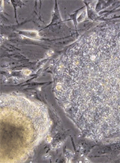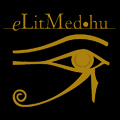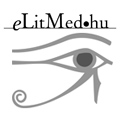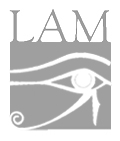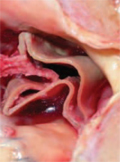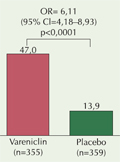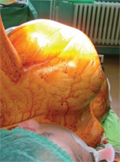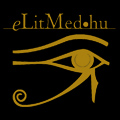The eLitMed.hu medical portal uses computer cookies for convenient operation. Detailed information can be found in the Cookie-policy.
Lege Artis Medicinae - 2010;20(05)
Content
[Haemophilia today]
[Haemophilia is the most well-known inherited bleeding disorder, which has an X-linked inheritance and affects men. Its severity is classified on the basis of the amount of circulating functional clotting factors: patients with values < 1% have severe disease, those with values of 1-5% have moderate disease, and those with values >5% are classified as having mild disease. Severe haemophilia is characterised by frequent, spontaneous bleeding episodes, whereas in those with moderate or mild haemophilia, bleeding is only caused by trauma or surgery. Although bleeding can occur almost anywhere, the most common clinical manifestation is haemarthrosis. Haemophilic arthrpathy that develops as a result of repeated episodes of joint haemorrhage is the most important factor of morbidity in those with haemophilia. Intravenous replacement of the missing clotting factor is used to treat and prevent bleeding episodes. Controlled therapy at home that provides immediate replacement is the optimal early approach. Prophylaxis includes administration of clotting factors at regular intervals to prevent bleeding, which must be the main goal of management until a cure becomes available. The development of inhibitors during treatment is the most significant complication of factor replacement, and management of bleeding in patients with such inhibitors is difficult.]
[Psychoendocrine aspects of chronic stress, depression and eating disorders]
[The brain is not only a central organ, but also a target of stress-related events. During chronic stress, many somatic and psychiatric disorders could be initiated by the decreased allostatic or adaptive abilities of the individual. The brain is involved in the regulation of stress-related events via hormones, neuropeptides, monoamines and cytokines. A number of endocrine diseases or hormonal changes are associated with behavioural, vegetative and emotional alterations, which occasionally lead to psychological disturbances, for example depression. The endocrine background is also reflected by the medical treatment of psychiatric patients, as demonstrated by the use of selective serotonin-reuptake inhibitors, and estrogen or levothyroxine substitution therapies. The psychiatric disorders presented here, such as the various forms of depression and eating disorders (anorexia and bulimia nervosa) are highlighted because of their frequencies and lifethreatening nature. By describing these disorders, we wish to aid their early diagnosis and treatment and to help incorporate them into everyday clinical practice.]
[About stem cells]
[Stem cells are special cells of an organism that are capable to continuously renew themselves and, triggered by environmental effects, to differentiate and produce cells suitable for various functions. Due to their special characteristics, stem cells have an exciting potential to fulfil an old dream of physicians: to replace and regenerate damaged cells and tissues. Regenerative medicine has undoubtedly opened new vistas in medicine and provides hope for those with yet uncurable diseases. Here, we briefly describe different kinds of stem cells and their sources and discuss some of their experimental or clinical applications. Besides the bone marrow, which is now considered a traditional stem cell source, we present alternative sources. Among these, we pay special attention to the two stemcell sources that are important for obstetricians and gynaecologists: the umbilical cord (Wharton’s jelly) and the characteristics of the umbilical cord blood. We discuss some aspects of the storage of cord blood (”stem cell banking“) its potential use. Obstetricians and gynaecologists have an important role and a great responsibility in promoting the collection and, if necessary, the use of these stem cells. Communicating with patients and informing them about the their possible therapeutic applications stem cells is a part of this process as well as obtaining cord blood and preserving a segment of the cord. Obstetricians and gynaecologists should help to save as much as possible the umbilical cord and cord blood, which become ”redundant“ after birth but are a great source of multipotent mesenchymal and haemopoietic stem cells, which can be used in various fields of 21st-century medicine.]
[Successful chest-wall reconstruction after the resection of a chondrosarcoma using muscle-flap and polytetrafluorethylene mesh repair]
[INTRODUCTION - Approximately 30% of malignant, primary bone tumours are chondrosarcomas, which most frequently develop on the anterior chest wall. Patients who are treated with adequate surgical intervention recover, 10-year survival rate is 97%. Besides the aesthetic outcome, preservation of breathing functions is crucial. CASE REPORT - The 36-years-old patient presented with a large chondrosarcoma, which infiltrated the left chest wall (4-6th ribs, the parietal pleura and the underlying muscles). Surgical resection was performed by opening the left thoracic cavity, sparing the skin and the subcutaneous layer. Reconstruction of the chest wall’s stability was carried out with a 20×25cm, polytetrafluoroethylene alloplastic Dualmesh, and an extensive myocutaneous dorsal flap (including the latissimus dorsi and serratus anterior muscles) that was pedicled on the left thoracodorsal vessels. After a normal postoperative period, the patient was released with sufficiently expanded lungs. No tumour remission was detected on the follow-up CT examination at 6 months after surgery. CONCLUSION - This case demonstrates that radical resection of chest-wall tumours and the above described reconstruction method allows the avoidance of paradoxial respiratory movements and provides excellent functional and aesthetic outcomes.]
[Financial incentives for quality improvement]
[Policy makers and payers of health care services devote increasing attention to improve quality of services by incentivising health care providers. These - so called - pay for performance (P4P) programmes have so far been introduced in few countries only and evidence on their effectiveness is still scarce. Therefore we do not know yet which instruments of these programmes are most effective and efficient in improving quality. The P4P systems implemented so far in primary care and in integrated delivery systems use indicators for measurement of performance and the basis for rewards. These indicators are mostly process indicators, but there are some outcome indicators as well. The desired quality improvement effects are most likely to be achieved with programmes that provide seizable financial rewards and cover the extra cost of quality improvement efforts as well. Administration of the programme has to be fully transparent and clear to all involved. It has to be based on scientific evidence and supported with sufficient dedicated funding. Conducting pilot studies is a precondition for large scale implementation.]
1.
Clinical Neuroscience
Is there any difference in mortality rates of atrial fibrillation detected before or after ischemic stroke?2.
Clinical Neuroscience
Factors influencing the level of stigma in Parkinson’s disease in western Turkey3.
Clinical Neuroscience
Neuropathic pain and mood disorders in earthquake survivors with peripheral nerve injuries4.
Journal of Nursing Theory and Practice
[Correlations of Sarcopenia, Frailty, Falls and Social Isolation – A Literature Review in the Light of Swedish Statistics]5.
Clinical Neuroscience
[Comparison of pain intensity measurements among patients with low-back pain]1.
Clinical Neuroscience Proceedings
[A Magyar Stroke Társaság XVIII. Kongresszusa és a Magyar Neuroszonológiai Társaság XV. Konferenciája. Absztraktfüzet]2.
3.
Journal of Nursing Theory and Practice
[A selection of the entries submitted to the literary contest "Honorable mission: the joys and challenges of our profession" ]4.
Journal of Nursing Theory and Practice
[End of Life and Palliative Care of Newborns in the Nursing Context]5.
Journal of Nursing Theory and Practice
[Aspects of Occupational Health Nursing for Incurable Patients ]





